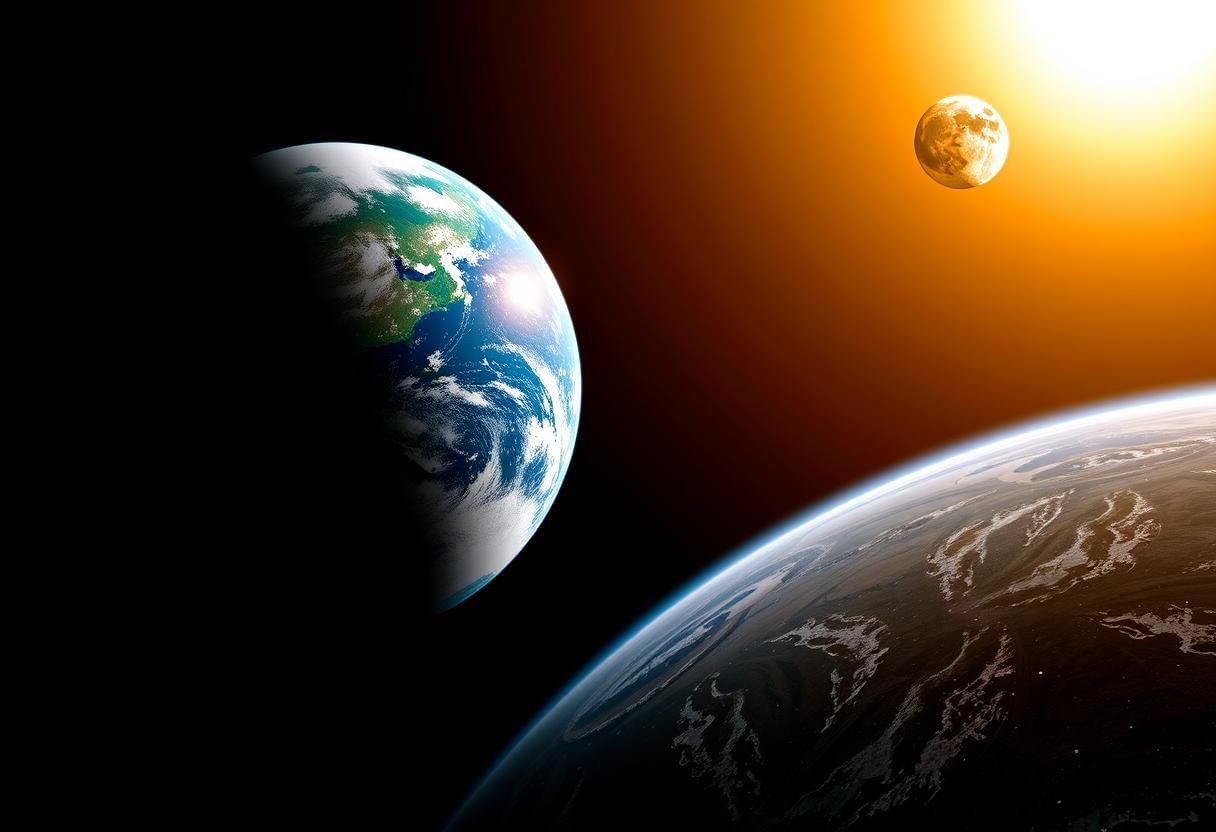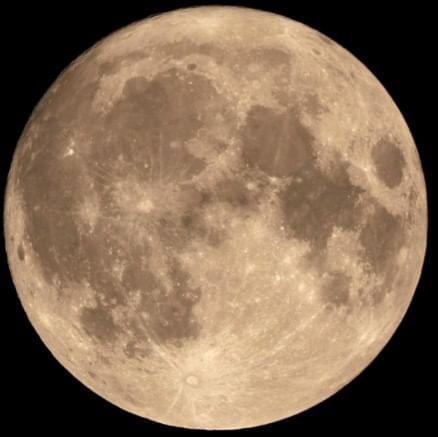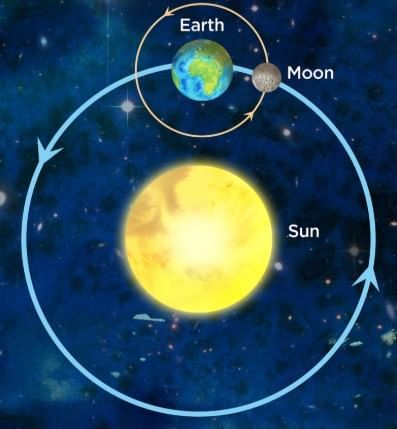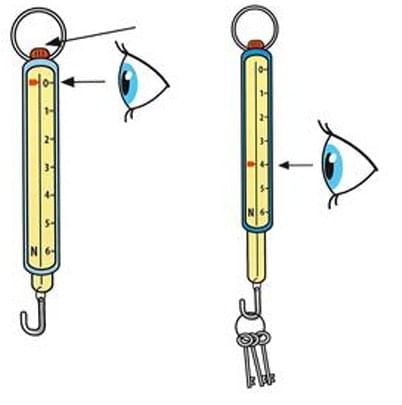Class 3 Exam > Class 3 Notes > Year 3 Science IGCSE (Cambridge) > Chapter Notes: The Earth and The Moon
The Earth and The Moon Chapter Notes | Year 3 Science IGCSE (Cambridge) - Class 3 PDF Download
The Shape of the Earth, Sun, and Moon
 Celestial Harmony
Celestial Harmony
The Earth, Sun, and Moon are all shaped like a ball. Their round form is caused by gravity, which shapes large objects in space into spheres.
Gravity Makes Spheres
- Gravity is the force that gives the Earth, Sun, and Moon their spherical shape.
- All objects with mass have gravity, and the strength of gravity grows with more mass.
- The Moon has weaker gravity than the Earth because it is smaller.
- The Sun has much stronger gravity because it is much larger.
- Gravity pulls everything toward the centre of an object, shaping it into a sphere.
- The Earth's spherical shape comes from its gravity pulling all its materials towards its centre.
- The Moon's round shape is due to its gravity pulling its rocky material inwards.
- The Sun's spherical shape is because of its gravity pulling its gaseous material towards its centre.
- Scientists study gravity using computer models to see its effects.
- These models help scientists understand various phenomena, like the human body, weather, and space.
- An example is how a rocket uses the Earth's gravity to speed up and reach the Moon.
The Moon

Facts About the Moon
- The Moon is a large, round rock that orbits the Earth in a circular path called its orbit.
- It takes the Moon 29 days to complete one orbit around the Earth.
- The Moon's surface is filled with many craters caused by impacts from space rocks.
- It is the only celestial body outside Earth that humans have visited, with Neil Armstrong being the first person to walk on it in 1969.
The Phases of the Moon
- The Moon appears to change shape from Earth due to the different visibility of its sunlit half, known as phases.
- The Sun lights up only the front half of the Moon, and what we see depends on the Moon's position relative to the Earth and Sun.
- When the Moon is farther from the Sun than the Earth, we see most of the lit side, called a gibbous Moon.
- When the Moon is at the same distance from the Sun as the Earth, half of the lit and dark sides are visible, known as a first quarter Moon.
- When the Moon is closer to the Sun than the Earth, only a small part of the lit side is visible, appearing as a crescent Moon.
- A waxing Moon means the visible lit part is getting larger.
- A waning Moon means the visible lit part is getting smaller.
- The Earth has two hemispheres, and the Moon's phases look different from each due to perspective.
- The eight phases of the Moon are:
- new Moon,
- waxing crescent,
- first quarter,
- waxing gibbous,
- full Moon,
- waning gibbous,
- last quarter,
- waning crescent.
Moonrise and Moonset
- The Moon rises in the east, moves across the sky, and sets in the west, similar to the Sun.
- This movement is due to the Earth's rotation, which occurs once every day.
- The Moon's orbit around the Earth causes its rising and setting times to shift slightly later each day.
- The Moon can be seen during the day or night, but it is harder to spot during the day because of the brightness of the sunlight.

New Science Skills
Measuring in Standard Units
- Scientists use standard units to ensure measurements are consistent and comparable worldwide.
- These units are universally understood and remain constant, facilitating global scientific communication.
- Examples of standard units include:
- Length: centimetres (cm) and metres (m).
- Time: seconds (s), minutes (min), hours, days.
- Temperature: degrees Celsius (°C).
- Force: newtons (N).
- Accurate measurement using standard units is vital for conducting scientific experiments.
How to Use a Ruler
- Align the zero mark of the ruler with one end of the object you are measuring.
- Position your eye level with the top of the object for an accurate reading.
- Be cautious, as the zero mark may not always be at the end of the ruler, which can impact measurement accuracy.
How to Use a Thermometer to Measure Air Temperature
- Hold the thermometer by the top to prevent your body heat from affecting the reading.
- Align your eye level with the top of the liquid in the thermometer to read the scale accurately.
- Avoid holding the bulb, as this will measure the temperature of your fingers instead of the air.
How to Use a Forcemeter
- Adjust the nut on the forcemeter to set the pointer to zero before taking a measurement.
- Place the object on the forcemeter to measure the force acting on it.
- Position your eye level with the pointer to read the scale accurately.

Drawing Tables and Using Bar Charts
- Tables are used to systematically organise measurement data, with a title and spaces for each result.
- An example table might track the height of a seedling over five weeks, with columns for weeks and rows for height in centimetres.
- Bar charts visually represent data from tables, making patterns easier to see.
- In a bar chart:
- The vertical axis (y-axis) shows the measured quantity (e.g., height in cm) with a label like “Height (cm).”
- The horizontal axis (x-axis) shows the time or categories (e.g., weeks) with a label like “Weeks.”
- Bars are drawn to match the data points, using a ruler for precision.
- Bars may touch each other but do not have to, depending on the chart design.
- A title is added to explain the chart’s purpose (e.g., “Bar chart showing growth of a seedling over 5 weeks”).
- Colouring the bars improves clarity and highlights data patterns, such as the growth trend of a seedling.
The document The Earth and The Moon Chapter Notes | Year 3 Science IGCSE (Cambridge) - Class 3 is a part of the Class 3 Course Year 3 Science IGCSE (Cambridge).
All you need of Class 3 at this link: Class 3
|
20 docs|7 tests
|
FAQs on The Earth and The Moon Chapter Notes - Year 3 Science IGCSE (Cambridge) - Class 3
| 1. What are the main differences between the Earth and the Moon? |  |
Ans. The Earth is significantly larger than the Moon, with a diameter of about 12,742 km compared to the Moon's diameter of about 3,474 km. The Earth has a diverse atmosphere, supporting life, while the Moon has a very thin atmosphere and cannot support life as we know it. Additionally, the Earth has a strong magnetic field and abundant water, while the Moon has no liquid water and a weak magnetic field.
| 2. How does a thermometer measure air temperature? |  |
Ans. A thermometer measures air temperature by using a substance that expands or contracts with temperature changes, typically mercury or alcohol in glass thermometers. As the air temperature rises, the liquid expands and rises in the tube, while it contracts and falls when the temperature drops. The height of the liquid column is then read against a calibrated scale to determine the temperature.
| 3. What is a forcemeter and how is it used? |  |
Ans. A forcemeter, also known as a spring scale, measures force or weight. It consists of a spring that stretches or compresses when a force is applied. The amount of stretch or compression is proportional to the force exerted, and it can be read on a scale marked in units such as Newtons or grams. It is commonly used in experiments to measure the weight of objects or the force applied.
| 4. How do you create and interpret a bar chart? |  |
Ans. To create a bar chart, first collect your data and determine the categories you want to represent. Draw a horizontal axis for the categories and a vertical axis for the values. For each category, draw a bar whose height corresponds to the value it represents. To interpret a bar chart, compare the heights of the bars to understand the differences in values across categories, providing a visual representation of the data.
| 5. Why is it important to study the Moon? |  |
Ans. Studying the Moon is important for several reasons: it can provide insights into the history of our solar system, the evolution of celestial bodies, and the geological processes that shape planetary surfaces. The Moon also serves as a platform for scientific research and exploration, including potential future human colonization and as a stepping stone for missions to Mars and beyond. Moreover, understanding the Moon helps scientists learn more about Earth’s own formation and environment.
Related Searches





















